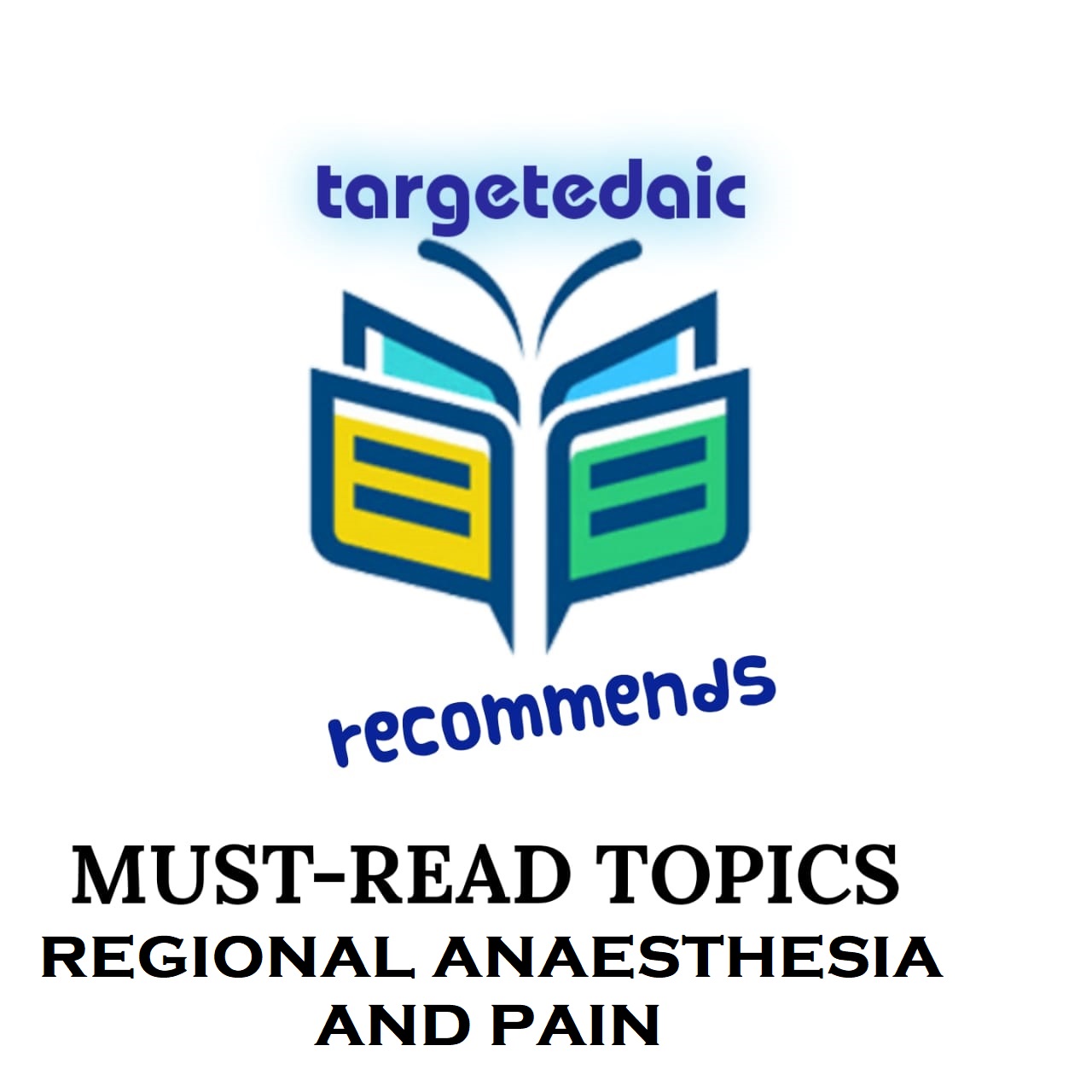Questions concerning Regional anaesthesia and pain are frequently asked in both parts. Fortunately, the questions revolve around limited topics and specific blocks that are not very difficult to memorise and retain, provided you know where to concentrate your efforts. This list includes the most common exam questions that you are likely to be asked in the EDAIC examination. Although the examiner is at liberty to test or ask anything, there are all-time favourites that you must know.
To make the challenging terrain a little less painful, we have tried to compile a list of the most important topics to be read from these systems, a bare minimum yet essential topics’ compilation.
Targetedaic recommends: What to read in regional anaesthesia and pain
• Pain receptors and pathway
• Pain modulation
• Pain pathway, gate theory
• Visceral pain (define, criteria)
• How to assess pain. Pain scales, effects of pain on the postoperative period
• Phantom limb pain.
• central sensitization and chronic pain.
• Complex regional pain syndrome
• Acute pancreatitis management in ICU including pain management.
• Block for awake intubation – nerves of the larynx
BLOCKS FOR CHRONIC PAIN
a. Stellate ganglion anatomy and block
b. Pancreatic cancer pain relief/ Coeliac block
c. Types of agents used. Differences and complications
d. Coeliac plexus block.
e. Trigeminal block
NEURAXIAL BLOCKS
f. Patient with epidural management for painless vaginal delivery 2 days ago. Right now she complains of numbness and paresthesia of her right side. What do you suspect and what to do? (all epidural complications)
g. Thoracic epidural (anatomy, level and block)
h. Anatomy and structures pierced during a spinal injection
i. Anatomy and function of the sympathetic nervous system and its function
j. Labour analgesia
k. Thoracic epidural for cholecystectomy, at what level, complication.
l. Case of lower segment cc how to give regional anaesthesia
m. While injecting epidural the patient collapsed. Elaborate on the causes & management.
UPPER LIMB BLOCKS
a. Radial nerve anatomy** (root value, course, injury, and all blocks related)
b. Axillary nerve block. Details. US-guided and draw relation of the nerves to Axillary artery
c. Brachial plexus, interscalene block with drawing
d. Bier’s block.
e. Musculocutaneous Nerve. How to block? Relevance in upper limb surgeries
LOWER LIMB AND ABDOMINAL BLOCKS.
a. Inguinal hernia blocks
b. Sacral nerve block
c. Anatomy of the Inguinal canal.
d. Abdominal wall blocks.
• Nerves of the femoral triangle
• Ankle block
• Femoral nerve anatomy
• Inguinal region nerve supply
• TAP block and its different forms and complications. Types of surgeries where it can be used and volume of drug given. Name the nerves blocked.
LOCAL ANAESTHETICS
• Pharmacology
• Types of hypersensitivity – anaphylaxis – pathophysiology and management
• Local anaesthetic toxicity and management
• Effect of local infection and additives
• How to hasten the onset, delay regression, improve quality, prolong the effect
FOR MUST-READ TOPICS IN THE RESPIRATORY SYSTEMS, CLICK HERE.
FOR MUST-READ TOPICS IN THE NERVOUS SYSTEM, CLICK HERE.
FOR MUST-READ TOPICS IN THE ENDOCRINE, METABOLIC AND NEUROMUSCULAR SYSTEMS, CLICK HERE.
FOR MUST-READ TOPICS IN THE PHARMACOLOGY, CLICK HERE.
-
 Radiology for the Anaesthetist₹1500.00
Radiology for the Anaesthetist₹1500.00


